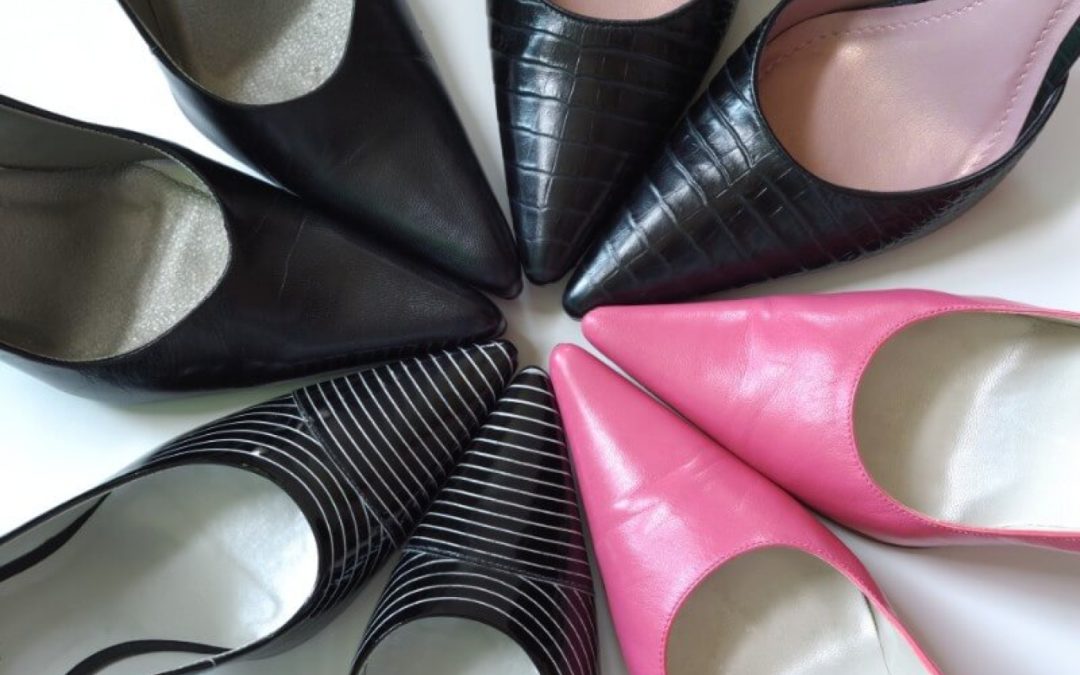Since the 1950s, pointed shoes have been a fashion statement. Whether they’re skyscraper stilettos or sensible flats, shoes with pointed toes can be big trouble. Alongside other forms of footwear including ultra-high heels and flip-flops, WebMD classes pointed shoes among the worst designs for foot health.
Some of the biggest problems caused by pointed shoes:
1. Bunions
Also known as Hallux Valgus, bunions are bony lumps that form at the joint at the base of your big toe. If your big toe is pressed against or towards your other toes, the pressure forces the joint to get bigger and stick out, which causes a hard, unsightly and painful lump to form.
Pointed shoes that have narrow toe boxes are among the causes for bunions, and are partly to blame for the recent increase in women suffering with bunions. A 2010 study recorded in the Journal of Foot and Ankle Research reported that bunions were much more likely in women, and that the likelihood of suffering increased with age, supporting the idea that decades of fashionable footwear could be to blame.
Bunions are not solely blamed on pointed shoes however. People who suffer with arthritis or have underlying foot deformities are especially prone to suffering from bunions, so should stay well away from this style of footwear.
2. Hammertoe
Hammertoe usually affects the second or third toe of your foot and is caused by undue pressure that forces the toe to bend or curl downwards, rather than in a forward direction. Hammertoe has a variety of causes, including arthritis, an unusually high foot arch or significant toe injury.
Among other causes is ill-fitting footwear, such as narrow or pointed shoes. Hammertoe can be a result of already suffering from bunions with the big toe forcing the second toe into an abnormal position.
3. Corns and Callouses
Corns and callouses are hard patches of painful skin that are caused by repetitive rubbing or an extreme amount of pressure repeatedly forced upon an area of your toes or feet. Corns are most commonly found on the joints on the tops of your toes, whereas callouses tend to be larger areas of hard skin, such as on the side of your big toe or underside of your toes or foot pad.
Wearing pointed shoes can significantly increase your chances of forming these painful patches, especially on the outside edges of your big and little toes, where the narrow shape of the shoe is rubbing the widest part of your foot.
Should You Still Wear Pointed Shoes?
We would always recommend wearing footwear that fits the natural shape of your feet – wide toe boxes with plenty of room for your toes to move and flex is essential for a comfortable day. Saying that, wearing fashionable shoes for shorter periods or special occasions isn’t likely to make a huge impact on your likelihood of developing one of these painful foot conditions.
What to Do If You Suffer with Bunions, Hammertoe, Corns or Callouses
At Feet By Pody, we assess all of these foot ailments and recommend the appropriate treatment. Corns and callouses are usually fairly easy to remedy, through a process of reduction. For bunions and hammertoes, conservative treatments such as wider, more comfortable and supportive footwear alongside anti-inflammatories, splints and strappings may help on mild cases. However, some chronic bunions and hammertoes can require surgery, so those pointy shoes can be a painful choice to make.
If your feet are suffering as a consequence of your fashionable footwear, book an appointment with one of our London podiatry clinics today.

